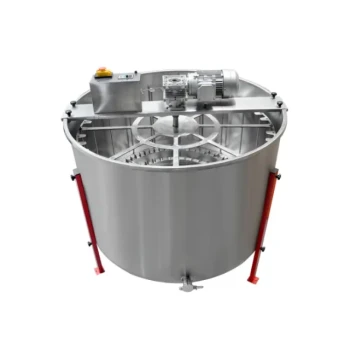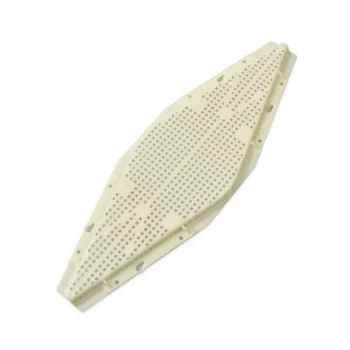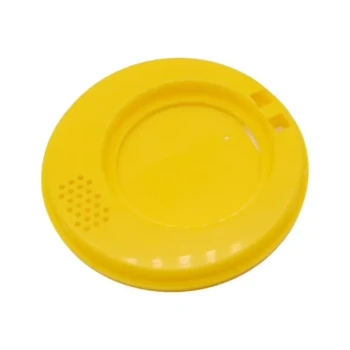Immediately after extracting honey, your primary goal is to manage the sticky, "wet" frames. You have two main options: return the frames to the hive for the bees to clean up, or prepare them directly for long-term, pest-free storage. For storage, freezing the frames is a critical step to eliminate parasites and moth eggs.
The core decision after honey extraction is not just about cleaning up a sticky mess. It's about protecting your most valuable beekeeping asset—the drawn comb—from pests and preparing it for a strong start next season.
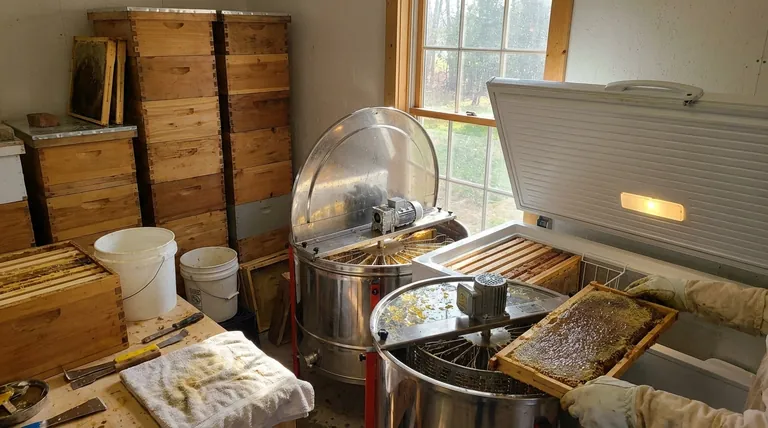
The Two Primary Paths for "Wet" Frames
Once the honey is spun out, a thin layer of residual honey remains on the frames. This makes them "wet" and highly attractive to bees, but also to pests like ants and wax moths. Your choice of what to do next depends on your goals and equipment.
Path 1: Returning Frames to the Hive for Cleaning
This is the most common and beneficial practice for hobby beekeepers. You simply place the wet supers back on top of the hives they came from.
The bees will meticulously clean every last drop of honey from the comb. This provides them with a valuable food resource and cleans the frames far better than any human could. After a few days, the frames will be bone dry and ready for storage.
Path 2: Preparing for Direct Storage
If you choose not to return frames to the hive, you must prepare them for storage immediately. Storing wet frames without protection is an open invitation for pests and mold.
The essential first step in this path is pest control. Leaving frames sticky and unprotected can lead to a devastating wax moth infestation that will destroy your drawn comb.
The Critical Step: Pest and Parasite Control
Regardless of which path you choose, protecting your comb from destruction is paramount. The drawn wax comb represents a massive energy investment by your bees, and preserving it gives your colony a huge head start in the next honey flow.
Why Freezing is the Gold Standard
Freezing your frames is the most effective, chemical-free way to ensure they are pest-free. This process kills any existing wax moth eggs and larvae, as well as other potential parasites like small hive beetles.
Many beekeepers freeze their frames for 24-48 hours. After freezing, you can either return them to the hive for cleaning or move them directly to their final storage location.
The Importance of Moth-Proof Storage
After the frames are clean (by bees) and pest-free (by freezing), they must be stored properly. The goal is to prevent re-infestation.
Store the frames in a secure, well-ventilated location that is inaccessible to moths and rodents. This can be done by stacking supers and sealing any gaps, or by using sealed plastic totes. Some beekeepers also use commercially available products designed to protect comb from moths.
Understanding the Trade-offs
Each approach has distinct advantages and potential pitfalls that are important to consider.
Returning to Hive: Pros and Cons
The primary benefit is that the bees get a final nutritional boost, and the frames are perfectly cleaned, reducing the risk of mold during storage.
The main risk is that placing wet frames out in the open can incite "robbing," where bees from different colonies fight over the resources. To avoid this, always place the wet supers directly back on a strong hive, preferably the one they were taken from.
Storing Directly: Pros and Cons
This method can be faster as it requires less interaction with the hives.
However, the risk of attracting pests is significantly higher if the frames are not frozen and stored in a completely sealed, moth-proof container immediately. Any failure in your storage method can lead to the complete loss of your comb.
Making the Right Choice for Your Operation
Your decision should be based on your priorities for bee health, time, and equipment protection.
- If your primary focus is bee health and perfect preservation: Extract, freeze the frames to kill pests, then return them to the hive for cleaning before final storage.
- If your primary focus is speed and you have a dedicated freezer and secure storage: Extract, freeze the frames immediately, and then place them directly into sealed, moth-proof storage.
Ultimately, protecting your drawn comb is one of the most important things you can do to ensure a productive and successful season next year.
Summary Table:
| Action | Primary Goal | Key Consideration |
|---|---|---|
| Return to Hive | Let bees clean frames; provide food source. | Risk of robbing; best for strong hives. |
| Direct Storage | Quick preparation for long-term storage. | Requires immediate freezing and moth-proof sealing. |
| Freezing Frames | Kill wax moth eggs/larvae and parasites. | Essential step for both paths; freeze for 24-48 hours. |
Protect your apiary's most valuable asset—your drawn comb. Proper frame management is critical for a productive next season. HONESTBEE supplies commercial apiaries and beekeeping equipment distributors with the durable, wholesale-focused supplies needed for efficient extraction, pest control, and secure storage. Let us help you safeguard your investment. Contact our experts today to discuss your equipment needs.
Visual Guide
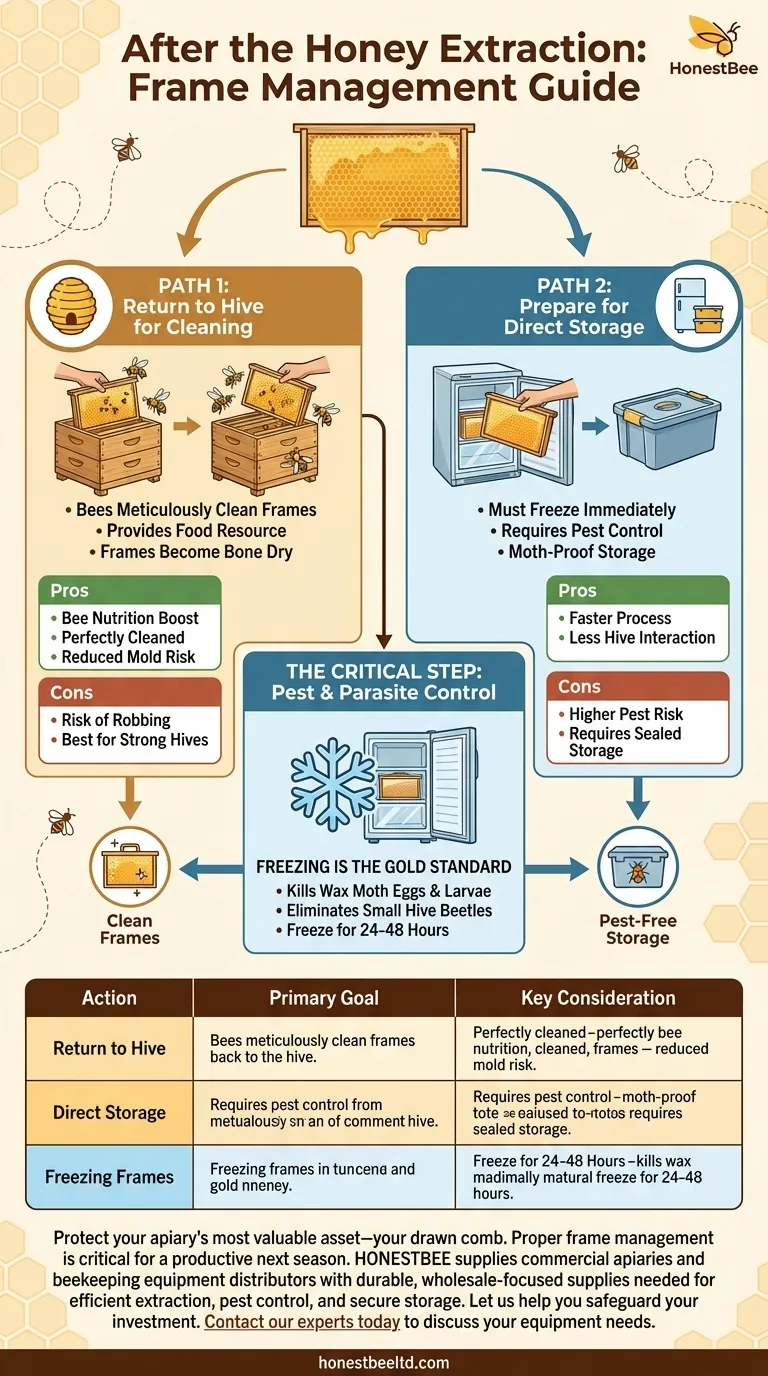
Related Products
- 24 Frame Honey Extractor Commercial Radial Honey Frame Extraction Machine
- HONESTBEE 3-Frame Manual Acrylic Honey Extractor
- Stainless Steel 3 Frame Manual Honey Extractor Spinner for Bee Honey Extraction
- 40 Frame Commercial Electric Honey Extractor for Beekeeping
- electric honey extractor honey centrifuge 3 frame honey extractor stainless steel honey frame extractor
People Also Ask
- What is a machine used to remove honey from frames? The Complete Guide to Honey Extractors
- How should the extractor be cleaned after use? Protect Your Honey & Equipment Investment
- What are the key features of a stainless steel honey extractor? Ensure Purity & Longevity for Your Honey
- Can honey extractors accommodate different frame sizes? A Guide to Choosing the Right Extractor
- What are the advantages of a radial honey extractor? Maximize Your Harvest Efficiency



